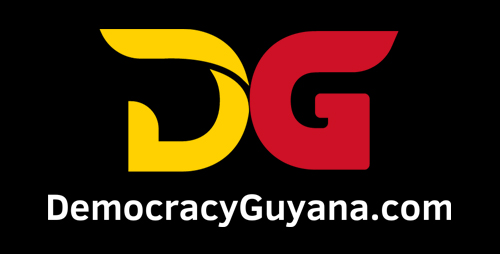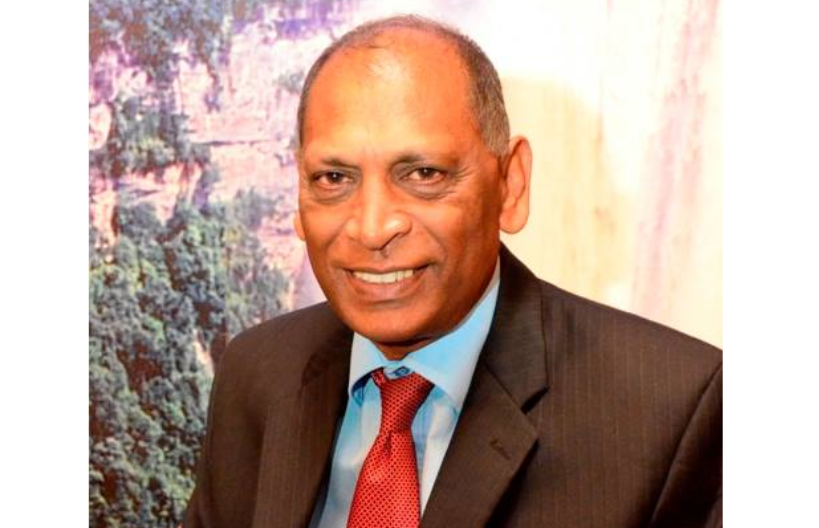Do you know that rice farmers invest more than $50B annually into Guyana’s economy? Farmers and fishermen might be the biggest, sustained across-the-board investors in Guyana’s economy. This is direct investment on an annual basis. But government must invest annually in the agriculture infrastructure and in policies to ensure that agriculture succeeds. While direct private investment by ordinary farmers is critical, government’s investment in agriculture, e.g. in drainage and irrigation, is a public good, similar to its investment in health, education, housing, water, sports, etc.
Successive PPP governments understand this. President Irfaan Ali not only understands this, he personifies this by his passionate promotion of agriculture across Guyana and around the world. The President’s enthusiastic endorsement of the global soil preservation movement is testimony to his understanding and his commitment to agriculture as a public good. It is why agriculture benefits from record-breaking increases in its annual budget since 2020.
Demerara Sugars remain a premium productacross Europe. While Demerara Sugars is what the Europeans know it as, it is really sugar from Guyana. Others have adopted the brand, but Guyana’s sugar remain a first-preference sugar for many around the world. SUGAR has experienced tough times in the last few years, but SUGAR remainsa vital cog in Guyana’s economy, Guyana’s development agenda and the global food security challenge. Certainly, even in the midst of its toughest struggle today, SUGAR remains a major employer and support community/village development. When the previous government (2015-2020) closed sugar estates it discovered its talk of the village economy on Guyana’s coast was wild talk, as the village economy tanked.
Albion Sugar Estate is undergoing major transformation right now. The estate is undergoing transformation to become a totally mechanized estate. While it has been the major sugar estate for decades, it is being restructured to produce more than 55,000 tons of sugar by 2026. With a packaging plant soon to be commissioned, with the ethanol plant still a potential, Albion is set to become the most important sugar producer in CARICOM. Albion, together with its sister-sugar estates in Guyana, particularly Blairmont with its packaging plant and a sugar refinery at Enmore, is set to become the major supplier of sugar for CARICOM nations. This was the goal when Bharat Jagdeo started the full mechanization program that began to bear fruit in the first crop of 2015 before the PNC/APNU/AFC Government shattered the dream. But between 2026 and 2028, GUYSUCO will be ready to become CARICOM’s source of sugar. President Irfaan Ali has vowed that as part of his 25 X 25 Food Security agenda, Guyana’s sugar will be CARICOM’s sugar.
Sugar is Agriculture in Guyana. It may no longer be the King of Agriculture, but it will remain a mover and shaker when it comes to agriculture and Guyana’s economy. Cheddi Jagan vowed that Sugar will always be important for Guyana. Bharat Jagdeo made the difficult decisions and the investment to ensure a new Sugar industry based on mechanization is able to survive the abandonment of the UK and European special concessions. Now President Irfaan Ali is ensuring a new GUYSUCO is fit-for-purpose to continue being a vital cog in the wheel of agriculture in Guyana.
While sugar comes from the olden days, by 2014, Guyana had no reason to import broccoli and carrots. Guyana’s supermarkets were brim-full of broccoli and carrots produced locally, even though our people were brain-washed to think that broccoli and carrots could not be cultivated in Guyana.Simultaneously, Guyana was also ready to begin commercial production of potatoes, onions and garlic. Our scientists and innovative farmers showed that the myth that these crops could not be grown under conditions in Guyana was perpetuated to ensure we always import these products. Between 2015 and 2020, the new government’s tsunami-like assault on agriculture led to the resumption of broccoli and carrot importation and local commercial production of potato, garlic and onion came to a complete standstill.
In 2024, under the inspired leadership of President Irfaan Ali and Minister Zulfikar Mustapha, agriculture is blazing brilliant new trails, with no need to import broccoli and carrots and positioned again for commercial production of potatoes, onions and garlic and to be a regional powerhouse for production of corn, soya, millet, and red beans.
The Minister of Agriculture, the Honorable Zulfikar Mustapha, this week was not timid in bragging about increased agriculture production, the expansion of agriculture in our country and improved infrastructure. It was not idle bragging. In fact, the Minister was humble in his boast about the enormous expansion of agriculture and the government’s strategy to consolidate agriculture’s place in the economy today and tomorrow. But across Guyana, there is quiet confidence that as glorious as agriculture has been in Guyana’s history, agriculture’s greatest glory is being scripted for 2030 and beyond, with Guyana playing a leadership role in the global food security drive.
Oil and Gas have made an impactful presence in Guyana’s economy the last four years and have been responsible for Guyana achieving the rank of the fastest growing economy in the world for the last four years.Guyana will retain this status for years to come because of oil and gas. But without agriculture, Guyana’s diversified economy will be considerably more fragile.
President Irfaan Ali has established food security as a major plank of Guyana’s present and future development agenda and as part of Guyana’s presence on the global stage. Minister Mustapha has been chosen as the leader of the agriculture sector. There can be no doubt that together this team has rescued agriculture from the doldrums that the previous regime pushed agriculture. President Ali’s 25 X 25 has already impacted food security in CARICOM. Together, President Ali and Minister Mustapha have restructured and reignited the Jagdeo Initiative.
In 2011, Guyana’s rice production averaged just over 250,000 tons of rice. As the new Agriculture Minister in December 2011, I declared an ambitious target of more than 700,000 tons by 2015 and 1,000,000 tons in 2020. While people dismissed me as crazy, Guyana reached a production of 698,000 tons in 2014. If rice production at Santa Fe in Region 9 and at Moco Moco were included, Guyana had reached the 700,000 tons one year ahead of schedule. In the first crop of 2015, under President Ramotar’s Government, Guyana had a record single-crop rice production, with close to 400,000tons under the leadership of Jagnarine Singh, presently at NAREI, and Ricky Ramraj, presently the DG at the Ministry. Yet, Guyana’s production for 2015 fell by almost 100,000 tons.
Under APNU/AFC, agriculture became a victim and, consequently, Guyana’s economy collapsed. When then Minister, Noel Holder, told rice farmers to stop drinking beer to afford increased lease rates, he made it clear, as was also articulated by the then president, David Granger, that agriculture was the people’s problem, not the government.
In 2024, under Minister Mustapha, Guyana will officially cross the line of 700,000 tons. Under this government, the 2030 production could exceed 1,000,000 tons. But the story of rice is only part of agriculture’s transformational story. Guyana has moved from an importer of soya and corn for the stockfeed industry and poultry and livestock production to where the country has already reduced importation of soya and corn and is expected to totally eliminate importation of corn and soya by 2028. Indeed, CARICOM’s needs for soya and corn are likely to be significantly filled by Guyana by 2030. Imagine from importing corn and soya, to becoming an exporter! This transformation story is worth telling.
Guyana, in fact, this year has become a producer of millet, one of the most important grain products in the world and can become the main supplier of millet for both human and livestock nutrition in CARICOM and even for some South American countries. As President Ali travels around the country, he works with ordinary citizens to start production of products we usually import. Minister Mustapha has the job of empowering people to become producers of such products. For example, the people of Bara Cara and other communities are already reaping red beans.
But agriculture cannot expand without infrastructure. When Bharat Jagdeo conceived of the Hope Canal project, people said it was impossible. PNC/APNU and AFC people came to my office demanding we discontinue the dangerous Hope Canal project, arguing it is not engineeringly-possible. Lionel Wordsworth and the young engineers proved PNC/APNU and AFC wrong and today the Hope Canal is an engineering masterpiece. The Irfaan Ali-led Government is now completing design work for six more of these Hope-like canals and construction is soon to follow. New highways, such as the Del Conte Road along the Essequibo River, past Hubu, the farm road from #59 on the Corentyne and the Road network from Orealla to Kwakwani are opening up new agriculture lands.
Before 2014 when we were trying to promote brackish shrimp production, we barely produced more than 5,000 tons annually. Even that modest production was impossible after 2015. After President Ali was sworn as President in August 2020, a new push to establish brackish shrimp production started. In 2023, Guyana produced more than 42,000 tons of brackish shrimp. In 2024, Guyana is set to produce more than 50,000 tons of brackish shrimp. But this is just the top of the “iceberg” for aquaculture today in Guyana. With sage fishing now well established in various communities, our rivers and shallow sea shores have become another innovation that is driving aquaculture production out of sight.
In spite of climate change and the challenges the whole world faces, Guyana is proving it is capable of improving and expanding agriculture. Visionary leaders and competent ministers are ensuring that long after oil and gas, Guyana’s economy remain strong because agriculture has been, remains today and will long into the future be the foundation. Minister Mustapha is not idly bragging. The food security goal for Guyana and CARICOM places Guyana in leadership position on the global stage.





